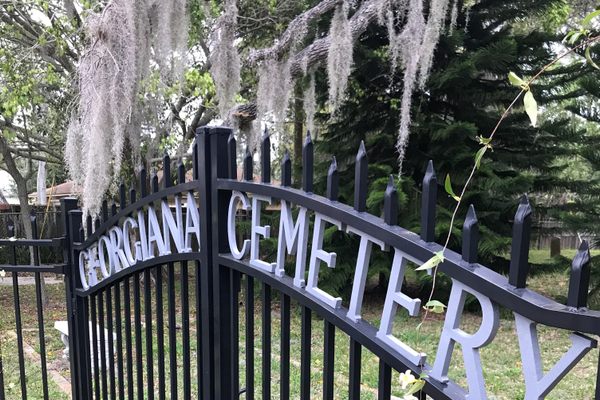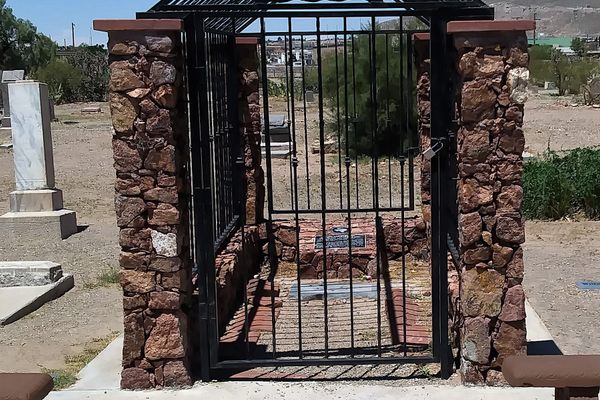About
In a small church graveyard in the village of Hardingstone, a wooden cross marks the final resting place of an unknown man, who was the unfortunate victim of another man's elaborate scheme to fake his own death.
In the early hours of November 6, 1930, two young men spotted a fire in the distance while walking to Hardingstone from a Bonfire Night event. They began heading towards the fire, and passed a neatly dressed man carrying a briefcase. The two men spoke to the stranger, who told them that somebody must have set a large bonfire alight during the previous evening's celebrations. The neatly dressed man then proceeded to wander off into the darkness.
When the young men eventually reached the fire, they discovered that it was in fact a car engulfed in flames (a Morris Minor to be precise). Inside the vehicle were the charred remains of an unknown man. They immediately notified the village police officer and used water from a nearby pond to extinguish the roaring flames.
Forensic examination showed signs of tampering with the car that suggested the fire was deliberately set. It was determined that the man inside the car died before it went up in flames, as there was no smoke in his lungs. Using the still-intact rear license plate, police determined that the car belonged to an "Alfred Rouse." A nationwide press appeal was launched, urging the neatly dressed man seen near the blaze to come forward.
The police proceeded to visit Rouse’s home, where they interviewed his wife. Mrs. Rouse was asked if she was able to identify scraps of clothing and a wallet that were found on the victim—she stated that the clothing resembled her husband’s, and that the wallet was definitely his.
Slowly but surely, the full story emerged: On the morning of the fire, the neatly dressed man—later identified as Alfred Rouse—had hitchhiked from Northamptonshire (the location of the crime) to his home in London. He later travelled by train to Wales where he met Phyllis Jenkins, one of his many mistresses. She asked where Rouse’s car was, and he replied that it had been stolen. What he did not know was that Jenkins had seen the news and recognized Rouse's car in the photograph. When he left to return to London, Jenkins contacted the police—Rouse was arrested upon exiting the train.
Rouse told the police that the car was his and that the whole ordeal was simply an accident, even telling the authorities that he had been making his way to Scotland Yard to report it to the police. He claimed that he had picked up a drunk hitchhiker, and that the fire had started after he asked his inebriated passenger to fill the car with petrol. Rouse told police that he had also given the man a cigar, and the car had caught on fire due to the hitchhiker's drunken state. The police presented Rouse with evidence of foul play, showing that the petrol line of the car had been deliberately tampered with, but he remained adamant that it was all an accident. But as he was subjected to further questioning, Rouse's story changed a number of times and it became clear to the authorities that he was guilty of the crime.
Rouse’s murder trial began in January 1931. The prosecution argued that Rouse had been trying to fake his own death to escape financial obligations. Rouse had fathered a number of children, which resulted in him having to pay child support. The jury found Rouse guilty, and he was hanged at Bedford Gaol in March 1931. Prior to his execution, Rouse wrote a letter to the newspaper, the Daily Sketch in which he confessed to the crime.
To this day, the identity of the man who Rouse killed remains a mystery. He was buried at St. Edmund's Church in a grave marked with a wooden cross. The cross was paid for by the Hardingstone villagers, who had raised funds for the unfortunate individual. The words ‘In Memory of an Unknown Man’ are carved in to the cross along with the date of his death.
In recent years a number have people have come forward, believing that there was a possibility that the unknown man was a missing relative. Each time, the DNA results have come back as a negative match and so the mystery remains in regards to the man's identity. Today, the original cross has fallen into a state of disrepair. It has been removed from the ground and rests on a headstone. A new, smaller wooden cross has been situated on the site with a brass plaque, stating a copy of the original cross' inscription.
Related Tags
Know Before You Go
The grave is located at the back of the church. The original wooden cross has seen better days and has since been replaced with a new cross. However, both crosses can still be seen on the site. The crosses are between two heavily pruned yew trees, directly behind a caged floodlight. Please be respectful of the churchyard when visiting.
Community Contributors
Added By
Published
April 29, 2021




























